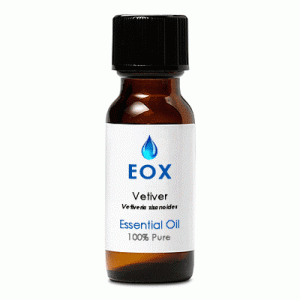|
Characteristics:
A dark brown, olive or amber viscous oil with a deep smoky, earthy-woody odor with a sweet persistent undertone. The color and scent can vary according to the source. It blends well with sandalwood, rose, violet leaf, jasmine, opopanax, patchouli, oakmoss, lavender, clary sage, mimosa, cinnamon, and ylang-ylang.
Principal Constituents: These are naturally occuring in the essential oil.
- vetiverol
- vitivone
- terpenes
- vetivenes
General Actions:   Open Symbols Key Open Symbols Key
Antispasmodic, depurative, rubefacient, sedative (nervous system), stimulant (circulatory, production of red corpuscles), tonic, vermifuge.
Safety:
Non-toxic, non-irritant, nonsensitizing.
Primary Therapy Agent:
Nervous exhaustion, fatigue, nervous tension, stress-related conditions.
Secondary Therapy Agent:
Acne, cuts/sores, greasy or oily skin/scalp, wounds, aches and pains, arthritis, muscle stiffness, muscular cramp, rheumatism, sprains, strains, depression, insomnia.
Important Note: The information on Florapathics.com is only provided for educational purposes, and further research should be done on each essential oil to be assured of its proper usage for each individual. Aromatherapy is not meant to be a replacement for care under a qualified health professional, but should be considered a complimentary modality.
|







